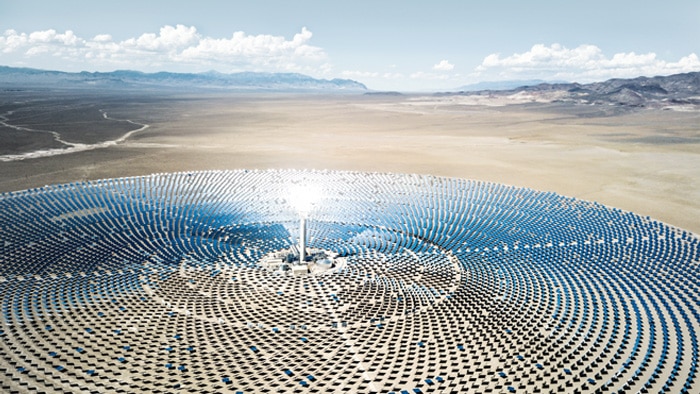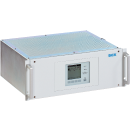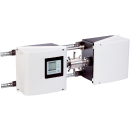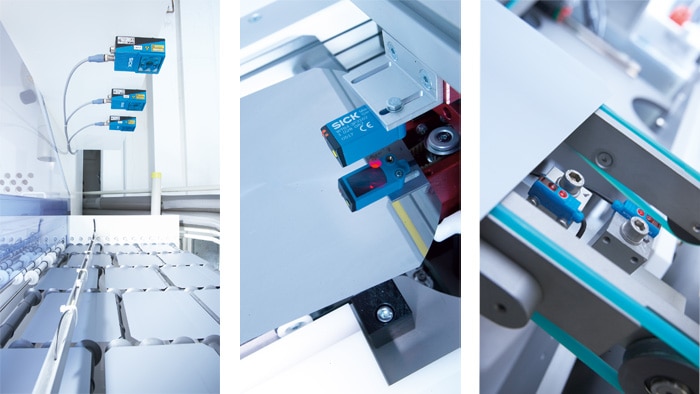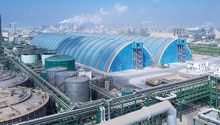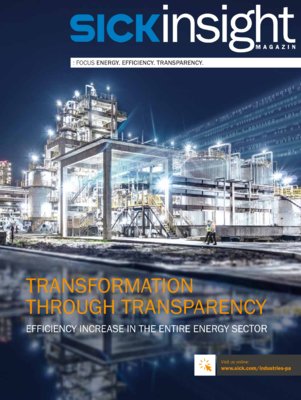Depending on the system capacity and location, solar power plants can supply entire regions with environmentally-friendly energy all day long. Operating entities are not happy until systems are working optimally – with a high degree of efficiency, reliable availability and profitability. That is why the use of sensors is absolutely necessary in many points of the process chain. With the right equipment, the sun shines every day.
Optimizing processes in solar power plants – solar energy
Solar power plants should produce as much power as possible. Thousands of reflectors are in operating full swing all over the world. In a first-class plant, the number of reflectors even reaches well into the six-digit range. The expansive power plants are often located near to the equator and are therefore often far away from civilization. This makes it clear as daylight that all components installed in the plant must work free of faults for long periods of time. Service work for remote regions cannot be organized and performed in a hurry.
That is why you are always on the sunny side of the street with reliable sensor performance. And SICK sensors are known for their reliability. They measure accurately and stably, and also score points with their long service lives. And, in addition, the SICK Remote Service program is a welcome offer and a service promise. Not only does commissioning and maintenance work run as a matter of course, but spur-of-the-moment service support is also fast and flexible. At the click of a mouse, experts fix problems in a timely manner. The customer-specific cloud solutions are designed in accordance with strict safety standards. The combination of intelligent sensors, quick service and networking of data reduces costs and also increases plant efficiency: From the solar cell to the heat exchanger to back-up gas fired power plant. And should on-site service still be necessary, the web-based service platform noticeably minimizes planning and setup times.
Solar tracking for higher energy yield
In heliostats, parabolic troughs and solar modules in a photovoltaic solar park, reflectors and solar cells must be aligned to the sun all day. The sensors measure the tilt or rotational movement of the reflectors and solar cells in one or two dimensions without making contact so that they can track the sun using the position data.
Like real outdoor professionals, the sensors also measure on hot, icy, dusty or wet days. The electronics are highly resistant and therefore nearly failsafe. Using encoders, the mirrors can concentrate the sunlight precisely on the solar tower, which then utilizes the energy accordingly. With concentrated solar thermal energy, thousands of mirror systems bundle solar radiation on an absorber surface. At this focal point, molten salt or thermal oil heats up and then flows through lines into heat accumulators or directly to the steam power plant.
The TDC (Telematic Data Collector) gateway system collects and saves measurement data from sensors using various interfaces. This data flows non-stop to a server or the customer cloud via mobile communication integrated in the system. The incoming and outgoing data increases transparency and can be utilized to increase productivity in downstream process optimization sections. SICK offers optional customer-specific cloud solutions for this purpose.
Efficiency increase in heat accumulators
Heat exchangers in heat accumulators or heat conversion plants generate steam to drive the turbines to generate power. The measurement quality of the steam flow frequently involves making compromises. Inaccuracies in the flow rate and pressure loss are tolerated. Even leakage hazards are often not precisely identified. But this does not need to be the case. The FLOWSIC mass flow measurement has proven itself in challenging and high-quality installations for steam quantity measurement. These ultrasonic sensors do not lose pressure, which results in higher system availability. The FID analyzer from SICK monitors organic carbon in low concentrations to protect against leaks in the N2 blanketing system. The MCS300P process gas analyzer checks whether steam or water escapes into the heat transfer oil.
Who works during the night?
The sun delivers so much energy that solar power plants can produce sufficient power and heat and are a real alternative to conventional power generators. With SICK, you can have your reserve power generation in attached gas-fired power plants under control. Monitoring of the natural gas flow to or within the gas-fired power plants with ultrasonic gas flow meters is also important for correct invoicing. Nobody wants to pay too much. And with products for emission monitoring, complete solutions can be created from a single source.
The future of solar energy continues
Power generation using solar cells is becoming increasingly attractive amongst regenerative energies. In 1958, US Americans started the solar revolution by equipping the “Vanguard 1” research satellite with solar modules. Satellites continue to use solar energy today. This success was at the same time the precursor for solar energy on earth – and then back up into the air. Swiss pilot André Borschberg, in his “Solar Impulse 2“ powered by solar energy, flew 8,300 kilometers nonstop between Japan and Hawaii. This has been the world record since 2015. The development of the solar market remains highly innovative with rapidly growing technology development.
Improved automation in solar cell production
SICK sensors are also qualified for the production of solar modules – from simple detection tasks to significant sensor systems in a complex production process. Cameras and software are specially designed for very low-reflectance solar cells and modules. Intelligent track and trace solutions have been proven in quality control. In production, sensors protect humans from dangers in the workplace.
For the last few years, there has been a trend towards more flexible modules. In production, flexible materials are being used as a replacement for rigid and very breakable glass. The flexible modules are much thinner than conventional solar modules. However, their production considerably reduces energy input, which in turn significantly reduces production costs. Without sensor technology, the fragile modules can quickly be damaged beyond repair in automated production processes.
The integration of flexible modules in roofing materials and facade elements enables cost-efficient system solutions.
